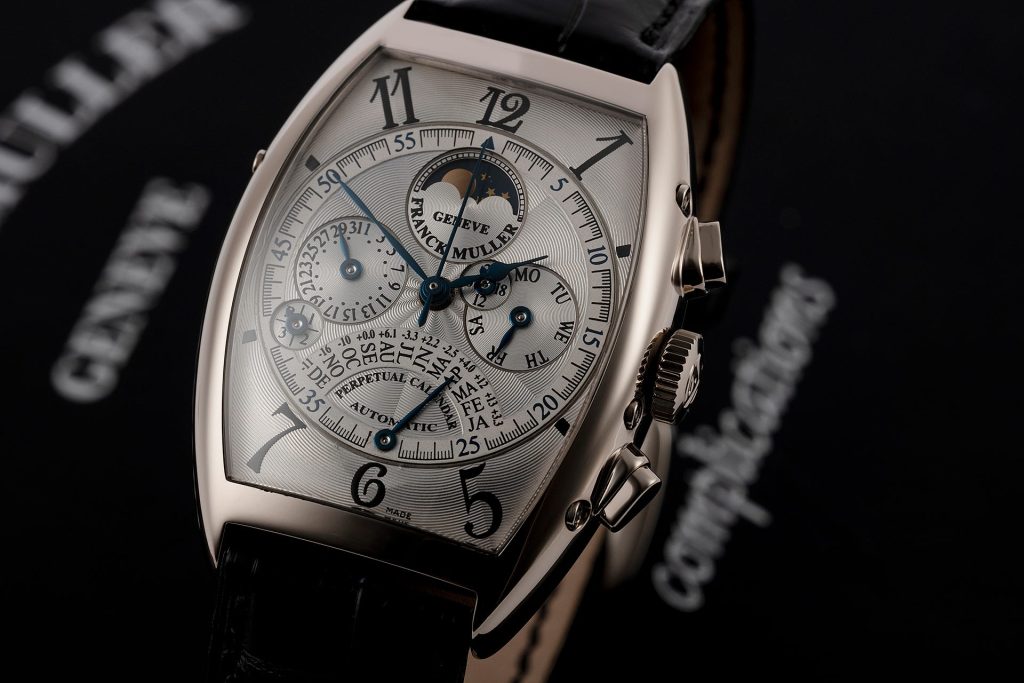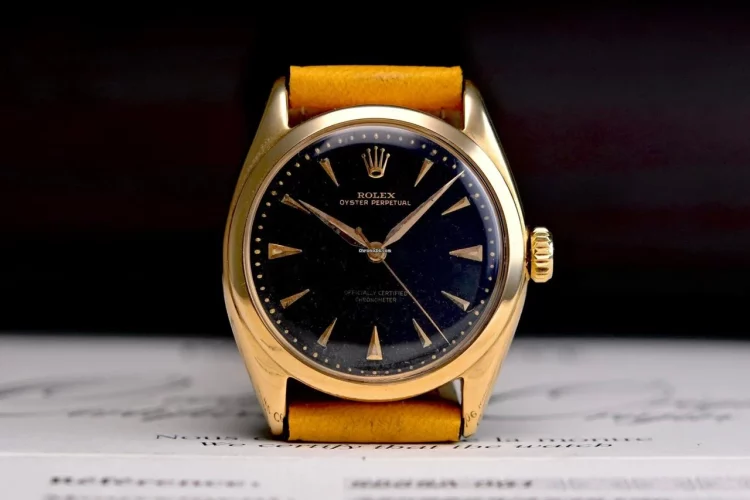A Forgotten Patent: Thorium-Coated Parts and the Quest for Frictionless Timekeeping
In the horological underground of the 1950s, Rolex quietly experimented with a radical new technology designed to eliminate the most nagging enemy of precision: friction. Long before silicon escapements or DLC coatings became mainstream, engineers at Rolex’s Geneva workshop filed a now-declassified patent describing a method of applying a microscopic thorium-based film onto watch pivots and gear teeth. The goal? Reduce mechanical wear to such an extent that the movement could function virtually maintenance-free for decades. The concept was as futuristic as it was dangerous: the self-lubricating mechanism relied on the low-radioactivity properties of thorium—a naturally occurring element that, while subtle in its emissions, posed potential health risks in enclosed environments over time.
The idea behind the “radiolubrication” method was theoretically sound. Thorium dioxide, in its oxidized form, created a hard, ultra-thin layer that acted both as a dry lubricant and a surface protectant, resisting galling and micro-wear in contact zones of the movement. The film was applied through a vapor deposition process, reportedly adapted from military gyroscope technology. The coated parts were said to run quieter, last longer, and resist oil migration—a major cause of drift in timekeeping accuracy. On the test bench, prototype calibers with thorium-coated escape wheels ran within COSC standards for multiple years without visible oil or routine cleaning.
But the project never saw full commercial rollout. By the early 1960s, increasing concern over low-level radioactive emissions—even from isotopes as weak as thorium-232—led Rolex to discontinue the experiment. Reports of minor radiological contamination during servicing, though unconfirmed, were enough to bury the project in the company’s sealed technical archives. Only a few prototype references, likely built on modified Oyster Perpetual or early Explorer calibers, were ever created. Today, those rare pieces surface only in private collections or deep-storage bank vaults, often undocumented and devoid of radioactive markings.
Silicon to the Rescue? The Modern Mirror of a Mid-Century Dream
Fast-forward to 2025, and the watch industry has found a new hero in silicon. Unlike the radioactive coatings of the past, silicon parts—particularly hairsprings and escapement wheels—provide a similar benefit of low friction, excellent anti-magnetic performance, and zero need for lubrication. Silicon doesn’t oxidize in the same destructive way as steel, and its natural hardness rivals synthetic ruby. Most importantly, it achieves these properties without any health or regulatory concerns.
Rolex itself, while traditionally conservative, has adopted silicon in a limited but strategic way through its Syloxi hairspring, introduced in 2014 in select models, especially in the women’s lines. While Syloxi hasn’t yet overtaken the Parachrom hairspring in flagship offerings like the Submariner or Daytona, its presence reflects a quiet shift in Rolex’s material science strategy: embracing modern tribology (the science of friction) to extend service intervals and enhance long-term reliability.

Other brands, particularly Omega with its Co-Axial Master Chronometer calibers, have taken things even further. The Co-Axial escapement combined with silicon components has achieved service intervals of up to 10 years—far beyond the 3-5 year standard that dominated the 20th century. In many ways, modern silicon engineering has realized the utopian dream Rolex had in the 1950s: high-frequency, self-regulating mechanical movements that can run, clean, and keep time with minimal human interference.
But the irony remains: the most elegant solution to Rolex’s original problem came not from chemistry, but from micro-machining and physics. Where thorium coatings had to be reapplied and required radiological handling precautions, silicon parts can be produced via photolithography in sterile labs, making them not only efficient but mass-producible. As a result, Rolex’s once-secretive pursuit of self-lubrication has become an industry standard—just without the radioactivity.
Restoration Warning: Identifying Vintage Pieces with Radioactive Coatings
Although Rolex officially never sold thorium-treated movements to the public, some prototypes or early test units may have slipped into circulation via internal transfers or post-service parts swapping during the 1960s. For collectors, the risk isn’t financial—it’s procedural. Handling, servicing, or even storing these rare specimens improperly could potentially expose watchmakers to low-dose radiation, especially if the coatings begin to flake after decades of decay.
The first step in assessing potential thorium use is identification. Here are some watchmaking red flags:
- Unusual Escapement Coloration: Coated escape wheels or pallet forks sometimes have a dull metallic sheen unlike traditional polished steel. Under UV light, some parts may fluoresce faintly.
- Nonstandard Movement Codes: Rolex movements that don’t match serial ranges or bridge engraving patterns may have been part of internal test runs.
- Unusual Lubrication Absence: Movements that show extremely low wear in contact areas after decades of no servicing may have been treated.
- Geiger Counter Test: Watchmakers restoring pieces from the 1950s–60s can use low-sensitivity Geiger counters to detect slight radiation. Most of these readings will still fall within safe thresholds, but they can serve as a warning to take precautions.
If a watch is suspected of containing thorium-treated parts, it’s advised to send the movement to a professional restoration lab rather than handle it through traditional independent service networks. Disassembly should be done in sealed environments, and parts should be documented for preservation or decontamination depending on decay.
It’s also important to avoid DIY attempts to clean, polish, or lubricate suspected components, as doing so could aerosolize fine particulate matter that may be hazardous if inhaled over time. In extreme cases, collectors may choose to replace affected parts entirely and store the originals in shielded packaging as historical artifacts.
Conclusion: Legacy, Innovation, and the Hidden Cost of Being First
Rolex’s foray into thorium coatings may not have solved modern servicing woes directly, but it represents a vital chapter in horological history—a time when brands were willing to experiment at the edge of science in pursuit of mechanical immortality. That courage, though now tempered by regulation and ethics, helped lay the groundwork for today’s advances in material technology.
Silicon may be today’s hero, but it walks in the shadow of dangerous brilliance. As the watch world moves toward longer service intervals, frictionless escapements, and micro-engineered lubricants, it does so standing on the radioactive shoulders of a mid-century dream.
For collectors and watchmakers alike, understanding the past isn’t just about nostalgia—it’s about knowing the hidden stories behind every tick, every jewel, every balance wheel. Because sometimes, the most luxurious thing a watch can offer isn’t gold or diamonds—but the risk someone once took to make it last forever.





































